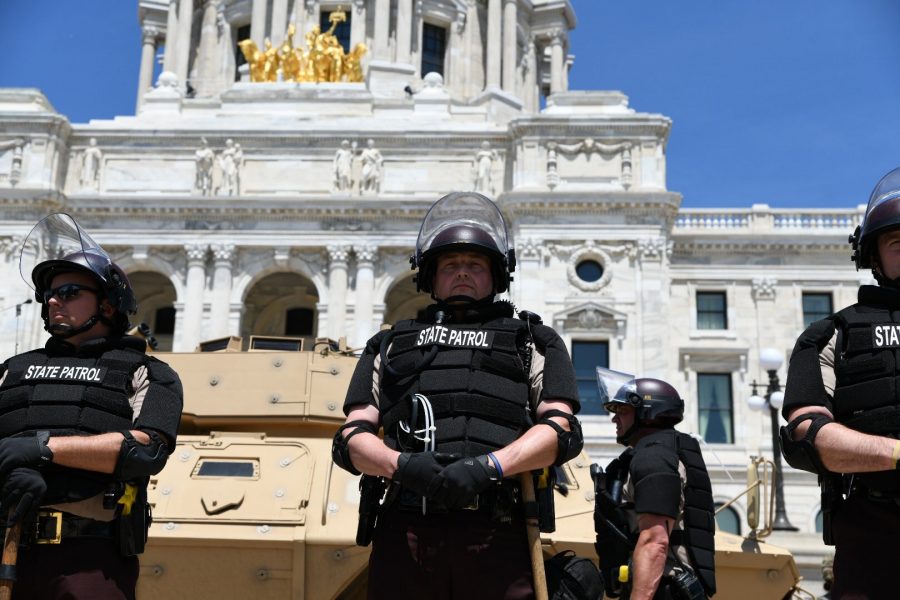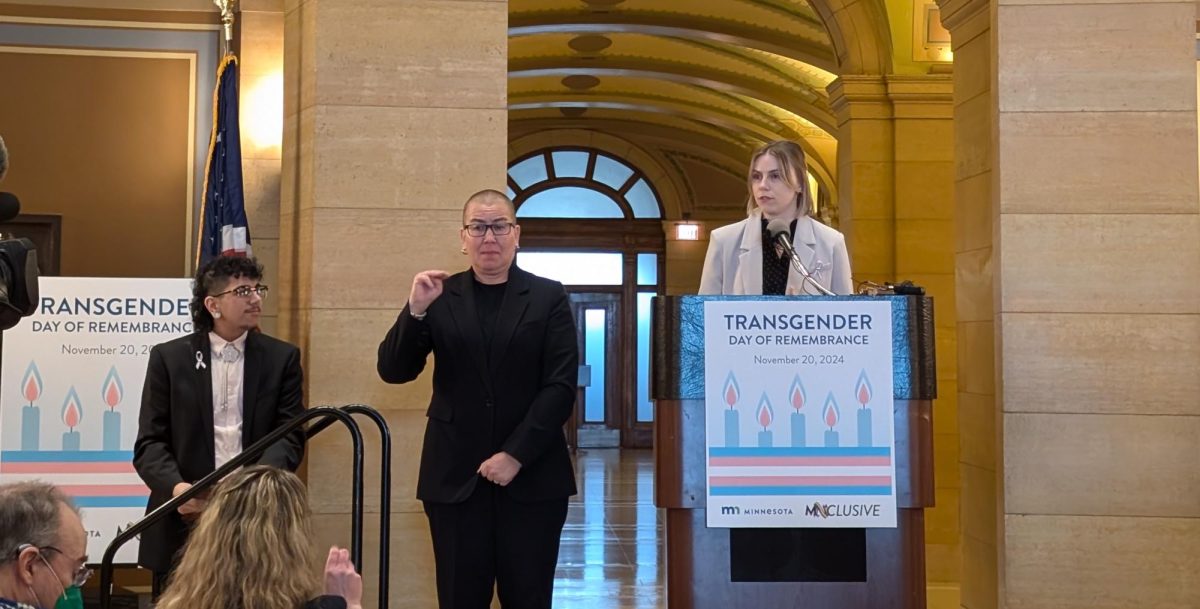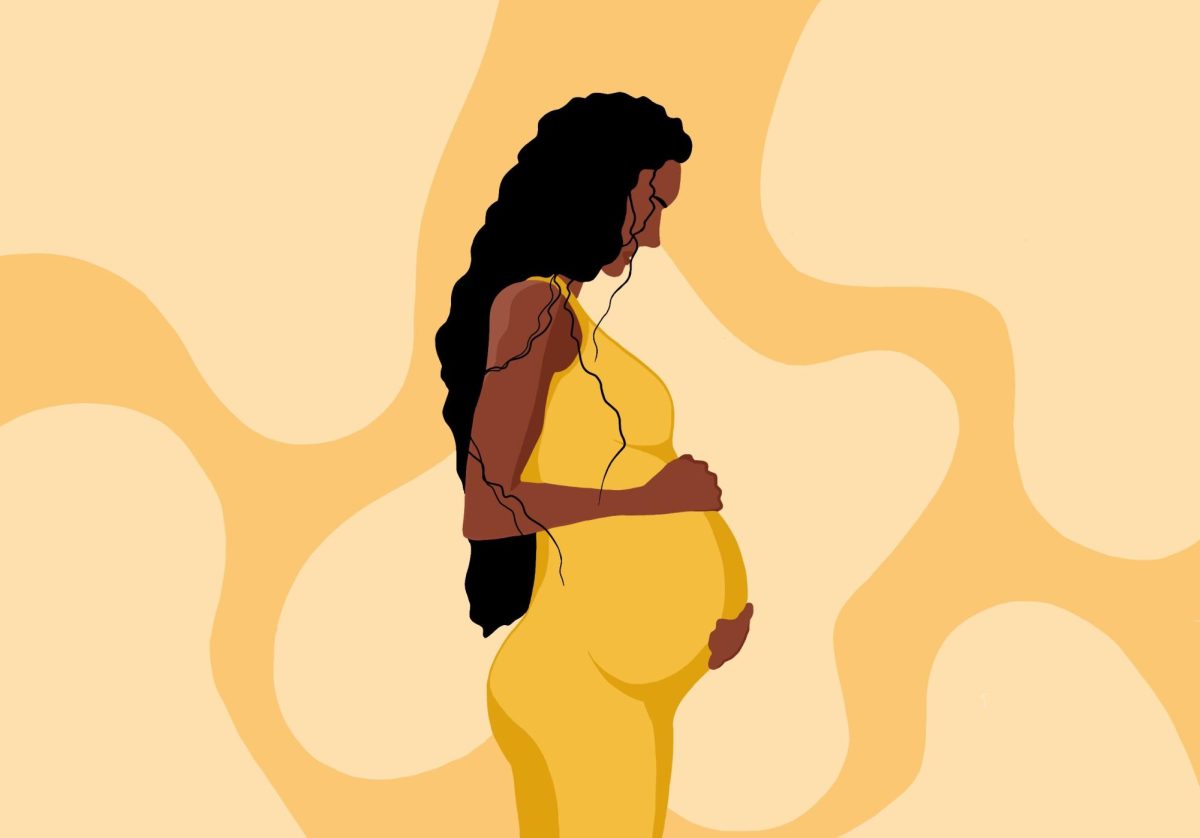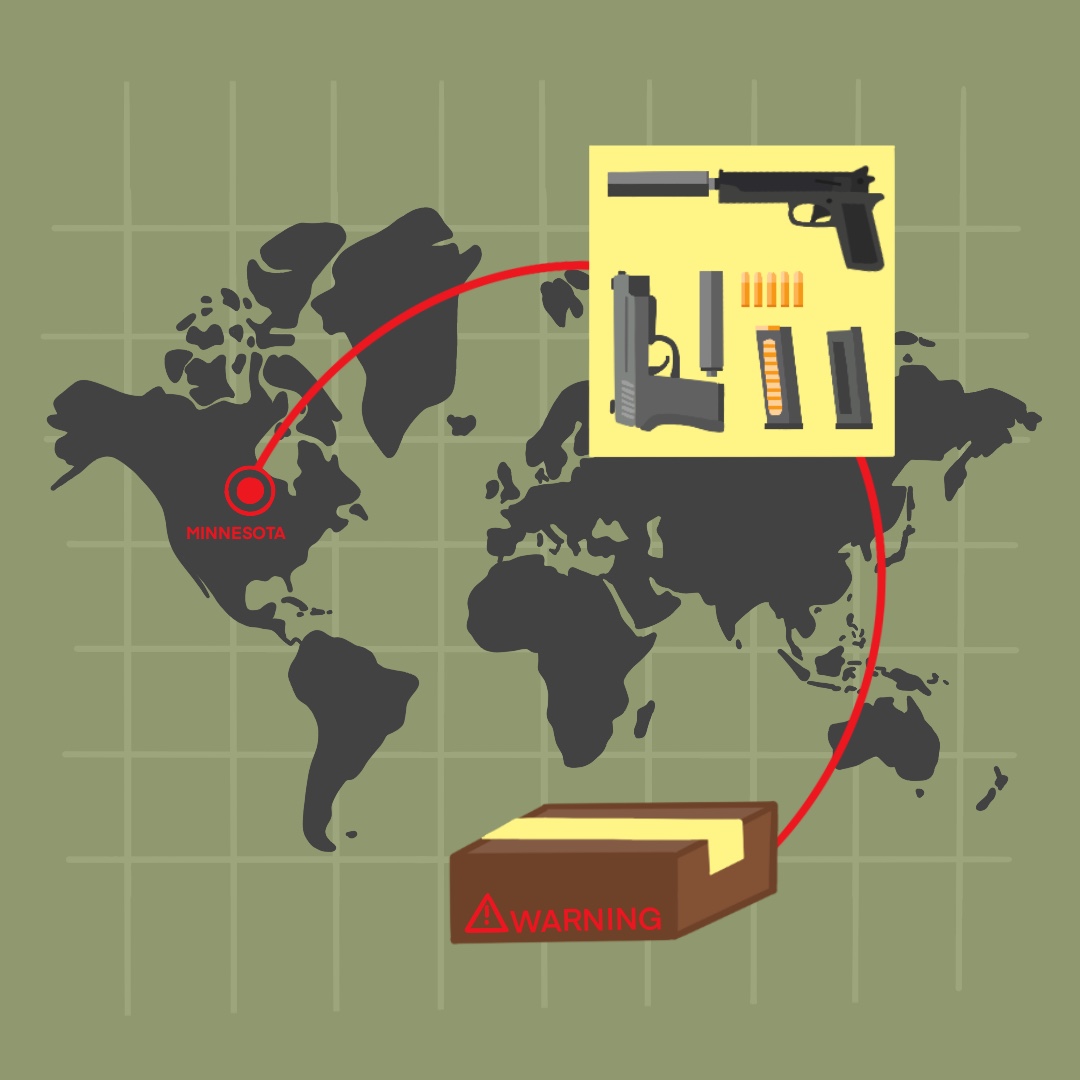Editor’s note: This story contains graphic descriptions of police brutality.
University of Minnesota researchers found that police use of less-lethal projectiles against protesters following the murder of George Floyd caused lasting damage and left long-term injuries.
Following the police killing of Daunte Wright, a 20-year-old Black man in Brooklyn Center, protesters have taken to the streets to express their discontent with law enforcement once again. As a means of crowd control and dispersion, law enforcement fired less-lethal projectiles such as rubber bullets, tear gas and tear gas canisters toward the crowd.
The state of Minnesota defines less-lethal munitions as “projectiles which are designed to stun, temporarily incapacitate, or cause temporary discomfort to a person.”
The study’s findings, which the New England Journal of Medicine published in late February, indicate that police officers’ use of these weapons may have violated the United Nations’ guidelines for the safe use of less-lethal projectiles.
Law enforcement’s response to people protesting the police killing of Daunte Wright is a “public health and safety concern,” said Erika Kaske, a medical student at the University who contributed to the study.
“There are news reports of head injuries from the weapons used during the protests in Minnesota this week,” Kaske said in an email to the Minnesota Daily. “This is why we say that these weapons are not appropriate for crowd control.”
Kaske and the other researchers presented the study to a Minneapolis City Council committee on March 4.
The research spanned the duration of the protests following Floyd’s murder.
“During that time, we noticed a lot of head injuries that were coming in,” Kaske said. “That prompted a systematic review of these injuries.”
After examining over 6,000 medical records, researchers found 89 people who sought a medical evaluation from injuries that stemmed from either less-lethal projectiles, tear gas or both.
Of those 89 patients, more than half of them had injuries from projectiles. Of the projectile injuries, 40% were from hits to the head, neck or face.
“We were really surprised to see the frequency and severity of some of the injuries, particularly the facial injuries,” said Dr. Sam Cramer, a University neurosurgery resident.
Cramer described some of these injuries, including skull fractures that required surgery and the removal of several patients’ eyes.
“When looking at these injuries, we wanted to understand if [projectiles] were used correctly,” Kaske said. “We looked at the United Nations guidelines and they say that hits to the head, neck and face are potentially unlawful.”
While the UN recommends limiting hits to these areas, it is ultimately up to the state and local governments to determine what is generally allowed. Rather than target the head, neck and face, the UN suggests aiming these projectiles directly at extremities to reduce serious injuries.
According to Minneapolis Police Department’s policy and procedure manual, officers are encouraged to consider all possible alternatives and assess the potential risks before firing a less-lethal projectile. Additionally, the manual instructs officers to aim for large muscle groups in the lower extremities, such as the thighs and knees, and avoid the head and neck.
Sean Lim, a fourth-year student at the University, has had several experiences with less-lethal projectiles, beginning in the summer of 2020.
“My first encounter with all of these instruments of terrorism was this past summer during the Minneapolis uprising,” Lim said. “I would bring jugs of water and a first-aid kit or two to the police precinct. I witnessed teenagers younger than me with their legs crossed, sitting down, holding their cardboard signs up in the air and police would indiscriminately fire rubber bullets at their heads.”
Lim recalls losing his hearing for 20 minutes after law enforcement detonated a flash-bang near him. He also witnessed protesters losing vision from rubber bullets.
Since the police killing of Wright, Lim said he has seen even more use of less-lethal projectiles.
Lim knows another student who had attempted to shield other protesters in Brooklyn Center from rubber bullets with an umbrella.
“There was a gap in the wall of umbrellas, and she went to close it,” Lim said. “Before she could, a stray rubber bullet went through the hole and smashed into the side of her hand and completely blew up her hand. She lost bone. She has since gone into emergency surgery. That is years, if not decades, of time that she will not be able to use her hand.”
Less-lethal projectiles may violate the Geneva Conventions of 1977, depending on whether or not they cause “unnecessary suffering.”
“Police don’t care,” Lim said. “We should not have police deploying these weapons on civilians who are simply protesting and exercising their First Amendment right.”
Although the use of less-lethal projectiles is legal in the United States, many question the ethics of using them.
“You don’t want to use force that’s disproportionate to the harm,” Joel Wu, a clinical ethics adjunct professor of the University’s Center for Bioethics, said. “If it’s a relatively low-harm thing, you don’t want to use a lot of violence to prevent that low-harm thing from happening.”
The report concluded that “under current practices, projectiles are not appropriate for crowd control.” Between 15 and 26 million people participated in protests about Floyd’s murder between May and July 2020, per the New York Times.
“Our main goal was to quantify the impacts of these weapons on our community,” Kaske said. “This can be helpful for medical providers and policymakers. It’ll be up to them as far as what they decide to do with this information.”
Following the City Council presentation, the researchers say they hope to see continued monitoring of injuries resulting from less-lethal projectiles.
“The hope is to be able to create a broader enterprise to track these kinds of injuries,” Wu said. “The more precise we are, the more data and evidence we have, the more we can actually design, inform and implement changes, so it doesn’t keep happening.”
Correction: A previous version of this story misstated Sean Lim’s relationship with the individual who shielded other protesters with an umbrella. This individual is the roommate of Lim’s friend.















Enn Arre
Apr 29, 2021 at 3:41 pm
“If it’s a relatively low-harm thing, you don’t want to use a lot of violence to prevent that low-harm thing from happening.”
Everone keeps consfuing peaceful protest and riots.
A peaceful protest, also known as nonviolent resistance or nonviolent action, is the act of expressing disapproval through a statement or action without the use of violence.
Rioting, a noisy, violent public disorder caused by a group or crowd of persons, as by a crowd protesting against another group, a government policy, etc., in the streets.
Tell me what level of harm (violence) is it considered when non-peaceful rioters are throwing rock and bottles at police, setting off illegal fireworks and breaching fencing surrounding a police station? At what level of harm (violance) are rioters able to be stopped? When they damage official vehicles? When they burn down buildings?
Truly peaceful protesters who stay around after curfew seem to enable the harmful (violent) acts of rioters and then they get hurt, claiming they were being peaceful. Maybe so but the getaway driver involved in a bank robbery also gets charged with murder if one of the robbers shoots a teller. Keep yourself away from the rioters or you appear to be one or at minimum appear to be supporting their acts.
Can we also quaitify the impact on our society of non-peaceful protesting also known as looting an rioting? This harms EVERYONE!
CapnRusty
Apr 29, 2021 at 3:15 pm
Before there can be law, there must be order.
Minnesotans have witnessed, many times over the past year, that crowds assemble to “peacefully” protest, but quite often those crowds turned into riots, sometimes involving looting and arson. That is a fact. In the case of the demonstration over the death of Duante Wright, there had to have been a reason the police were present. Possibly the police had attended the demonstration at the beginning to prevent it from turning into a riot (see above). At some point, the police saw that things were getting out of control. Their duty was to prevent a riot. The first thing the police would have done is to order the crowd to disperse. When the crowd refused to obey that order, the police had to use firmer measures.
Undoubtedly some, perhaps many, of the protesters wanted the police to escalate; otherwise, their story wouldn’t get in the papers. As an added benefit to the protesters, they could assume the status of victims of police brutality, which is a very bright virtue signal, earning them esteem among their peers.